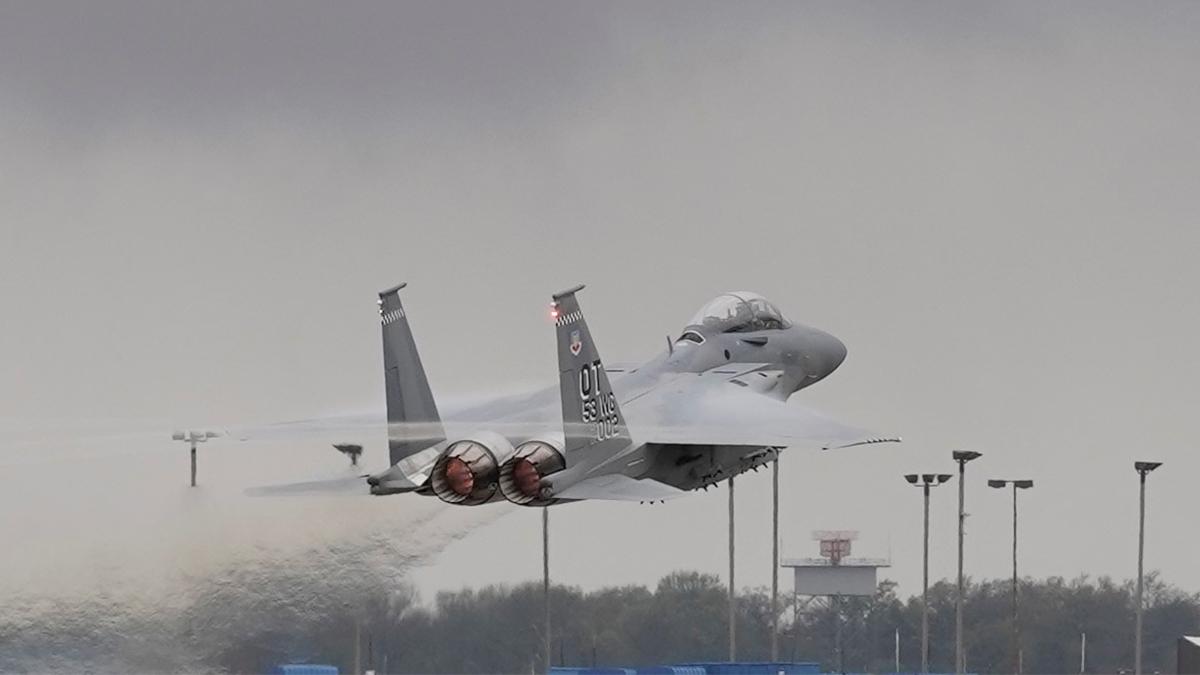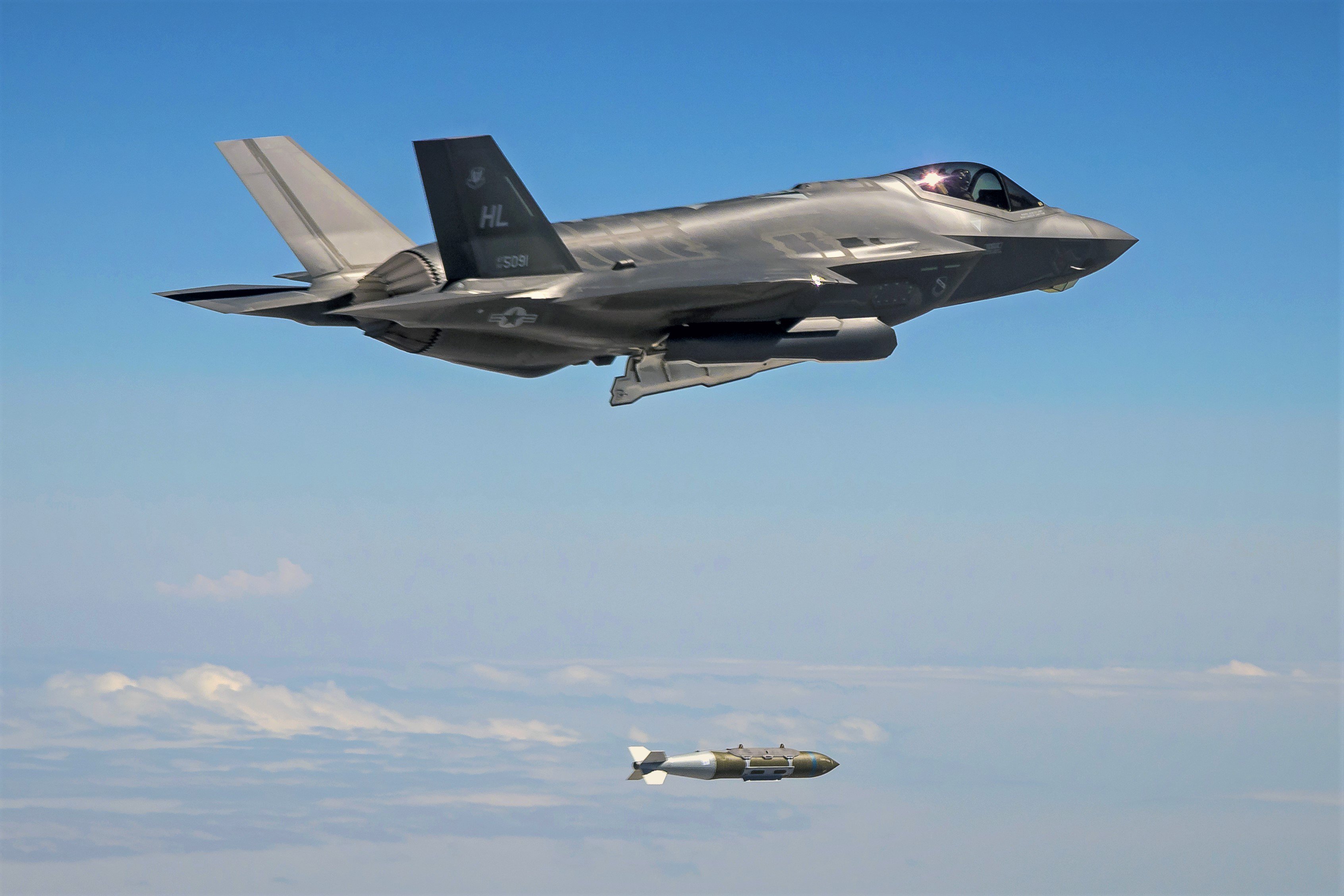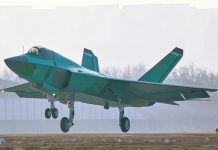Boeing’s F-15EX, the most advanced variant of the F-15s, boasts improvements in computing, radar range, avionics, sensor, and weaponry. In the US military circles, a debate is on if the fighter jet can win the lucrative Indian Air Force contract.
One of the US’ oldest fighter jets, the F-15 Eagle, recently got a “super makeover”, when the Pentagon approved further upgrades two years ago. In July 2020, the US Air Force (USAF) awarded Boeing a $23 billion contract for up to 144 F-15EX fighters to replace the aging F-15C.
The first two aircraft have been delivered to the service in March and April this year. More jets are likely to be received by USAF by the end of the 2023 financial year.

The newest fighter aircraft has raised a debate in military circles whether the USAF should invest more in the fourth-generation F-15EX or the fifth-generation stealth F-35 fighter.
On the other hand, Boeing is repeatedly pitching the F-15EX to the Indian Air Force, something which was never done with the F-35.
F-15EX Fighter Jets
Equipped with next-generation technologies, Boeing describes the latest series of changes as “enhancing F-15EX maneuverability, acceleration, durability, computing power, and weapons carriage to improve interoperability and strengthen deterrence”.
At a speed of Mach 2.5, the F-15EX is one of the fastest fighter jets in the world. The technological upgrades include advanced electronic warfare, active electronically scanned array radar and ultra-high-speed computer processing with Open Mission Systems to look after the digital technology architecture.
Reports also suggest that the new F-15EX will be earmarked for carrying hypersonic weapons, with a payload of making it a transformative feature for the US Air Force.
The state-of-the-art avionics include a 21st-century cockpit which provides “real-time access to battlefield information and enhances the pilot’s understanding of the environment to reduce workload, speed decision-making and superior mission management”.

While the upgrades made to the legacy F-15 fighter make the latest variant a deadly aircraft, military experts still raise doubts over its need as well as utility in combat scenarios, especially against the other fifth-generation fighters like the Chinese J-20 and Russian Su-57.
Comparisons With F-35
Comparing it to the fifth-generation F-35, National Interest reported that stealth, maneuverability, artificial-intelligence-enabled sensor fusion, and other attributes of an F-35 jet seem to present things an F-15EX strike aircraft simply cannot match.
The F-15EX can carry 22 onboard air-to-air missiles, six more than the F-35’s capacity, but critics argue that a large payload capacity is irrelevant if the fighter can’t survive long enough to make use of it.

In 2016, the F-35 jets took part in an exercise against the heavy-weight F-15 Eagles (often considered the bodyguards of the F-35s) and had a stunning kill rate of 8 without enduring any losses.
Despite cutting-edge avionics, the construction, coating, shape, and armament configuration remains fourth-generation and the lack of stealth makes F-15EX vulnerable to either Russia’s echeloned missile and air defenses or China’s sophisticated anti-access, area-denial (A2/AD) network in the Pacific.
F-15EX For India?
Among the seven contenders for the Indian Air Force’s (IAF’s) ongoing acquisition of 114 medium fighters in a contract worth an estimated $20-30 billion, Boeing has pitched its F-15EX multirole fighters.
In January this year, the US government approved a marketing license of the F-15EX to India, kicking off discussions between Boeing and Indian Air Force.
Following the announcement, the jet was part of Boeing’s Aero India 2021 exhibit alongside F/A-18 Super Hornet, KC-46A, AH-64E Apache, P-8I, Chinook, 737-10, and 787-9.
“The F-15EX can offer a future-ready, multi-role solution to the Indian Air Force in the form of unmatched payload, performance, and persistence by integrating leading-edge technologies, networks, and weapons and sensors,” a press release said.
✅ Performance
✅ Payload
✅ PersistenceFrom the family of the undefeated F-15, the next-gen #F15EX makes its debut at #AeroIndia2021. pic.twitter.com/gSmz7Tro5R
— Boeing India (@Boeing_In) February 2, 2021
While Boeing has also pitched the land-based variant of the Super Hornet to IAF, experts suggest this would be offered to the Indian Navy while the F-15EX to the Air Force.
“There is no way Boeing would field two fighters in the same competition,” said Pratyush Kumar, who heads the F-15EX project in Saint Louis, US.
Estimated at $80 million per piece, the cost of flying the F-15EX fighter is around $20,000 per hour, which is half the cost of flying the advanced F-35 fighter, which costs around $44,000 per hour, which is yet to be brought down to $25,000.

The EurAsian Times earlier reported that the F-15EX is better suited against China and Pakistan, given how India needs its modern fighters to have substantial fuel tanks to fly for longer hours so that they do not have to return to base for refueling.
Slim Chances For F-15EX?
However, a major hurdle for the F-15EX is a doctrinal one. While Indian has been operating heavyweight Su-30MKI as the backbone of its aircraft fleet, its experience with the enormous fighter jet has not been extremely satisfactory.
While there have been technical and other issues with the MKIs, the Indian Air Force has traditionally used smaller aircraft, which are easier to maintain and operate from challenging airbases.
This may count against the F-15s, besides the IAF already operates hundreds of heavyweight Su-30 MKIs which are similar to F-15EX.
Another massive hurdle in India’s acquisition of fighter jets is the government’s demand for technology transfer. This has been one of the biggest blockades and most likely the fundamental cause of the failure of the MMRCA tender.
For India, any future fighter jet acquisition must contribute to the domestic defense-industrial capacity.
Here, too, attractive offerings, such as Lockheed Martin’s pact with Tata group or Dassault’s tempting offer to India or Russia’s newest single-engine stealth fighter jet – Su-75 Checkmate could sideline the powerful F-51EX jets.
Even SAAB, which develops the multi-role Gripen jets, has offered India a lucrative offer, which reportedly includes setting up an advanced industrial body in India. The company also said that it is completely aligned with the ‘Make in India’ policy of the government and “is ready to build products and solutions here in India, by Indians, for India and for export”.
There is no doubt that Boeing’s F-15EX will provide the IAF with a powerful alternative but it remains to be seen if the fighter jet can outflank Eurofighter Typhoons, Russian MiG-35 and Su-35 jets, Dassault Rafale jets, Swedish Saab Gripen, and last but not the least, Su-75 Checkmate.
Views expressed are personal




